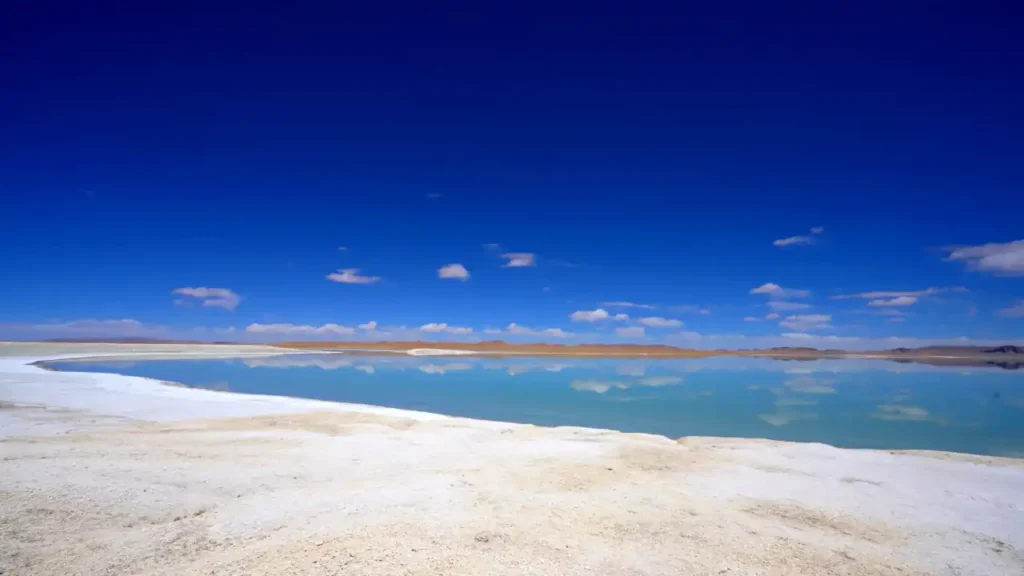Hydromagnesite is a unique magnesium-bearing nonmetallic ore in Tibet, China, with chemical formula: 3MgCO3-Mg(OH)2-3H2O.
The main content of magnesium hydromagnesite in the ore is high and the impurity content is low, it is a kind of natural inorganic material with white color, and its main component is the complex formed by magnesium hydroxide and magnesium carbonate with water of crystallization.
Through the thermal analysis of hydromagnesite: its decomposition occurs above 200℃, with the increase of temperature, it releases H2O and CO2 and forms MgO coating layer, and its unique three-stage flame-retardant mechanism plays a role in heat absorption, dilution of combustible gases, isolation of O2 and physical coating and other flame-retardant effects.
Hydromagnesite is used to make magnesium oxide, magnesia and other refractory materials, is the manufacture of magnesium materials, high-quality raw materials; magnesite after grinding, modification, used for rubber, plastics and other materials such as fire-retardant filler; in addition, Hydromagnesite can also be used for desulfurization, sewage treatment and other industries, the use of a wide range of purposes.
The main conclusions drawn by Messi Biology on the mineralogy of hydromagnesite in the Bango Lake area of Tibet are as follows:

I. The crystalline particles of this water magnesite are very fine, dominated by mud crystals-micro-mud crystals, and most of the grain sizes observed under polarizing microscope are in the range of 4-20 μm, which are often in the form of patchy and lenticular dense aggregates, and in the edges of the pore spaces, the distribution of aragonite is common.
Second, polarized light microscope observed under the mud crystal aggregation form is actually magnesite developed into lamellar structure of clumped aggregates. The monomer is monoclinic plate lamellar, often flat along the (100) formation of contact bicrystals, with characteristic oblique stripes of the crystal surface is (001) crystal surface.
Third, the water magnesite is mainly composed of water magnesite, aragonite, dolomite and other carbonate minerals, silicate minerals (albite, smectite, chlorite, talc, plagioclase feldspar) and oxide minerals (quartz, acicular ferrite, titanomagnetite) and other co-associated minerals content is very small.
Fourth, water magnesite, the most important symbiotic relationship for hydromagnesite – aragonite – dolomite symbiosis, three minerals are dipping symbiotic relationship. The particle of water magnesite is the coarsest, the particle of dolomite is the finest, it is more difficult to remove aragonite and dolomite by physical beneficiation method.
